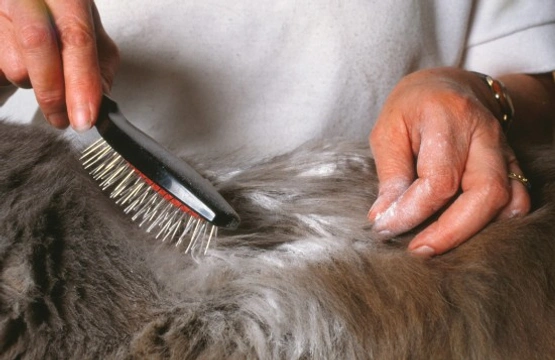
Six top tips for fighting fleas effectively
Fleas can cause significant discomfort and health issues for your pet and can quickly infest your home. Persistent flea infestations are a common challenge for pet owners, but with the right approach, they can be controlled and prevented.
Many pet owners use regular flea treatments such as spot-on products, oral medications, or collars to keep fleas at bay. However, effective flea control involves a combination of treating your pets and your home consistently and thoroughly.
Here are six top tips to help you battle fleas successfully and protect your pets and home in 2025.
1. Change your flea treatment products when necessary
Use only high-quality, veterinarian-approved flea treatments specifically formulated for your pet's species, weight, and age. Avoid low-cost supermarket brands which are often ineffective. Fleas can develop resistance over time to the active ingredients in certain products. If you notice your current flea treatment losing effectiveness, consult your vet or a reputable breeder about switching to a different product with a new active ingredient that is suitable for your pet and effective in your region. This ensures continued protection against fleas.
2. Groom your pet regularly
Frequent grooming, at least once a week, helps to physically remove fleas and eggs from your pet’s coat. Use a fine-toothed flea comb, which is a practical, chemical-free way to catch fleas early or prevent an infestation. During baths, you can use flea-specific shampoos that are safe and effective. Regular grooming also allows you to check for signs of fleas or skin irritation, enabling early intervention.
3. Always treat all your pets simultaneously
Synchronised flea treatment for all your pets is vital to prevent an ongoing cycle of infestation. This applies even if your household includes different species. Fleas can easily transfer between pets, undermining your control efforts if only some animals are treated. Additionally, be mindful of pets your animals interact with during walks or visits. Politely encouraging neighbours to treat their pets can help reduce flea transmission in your local area and protect your pets more effectively.
4. Treat your home thoroughly
Fleas often hide in carpets, upholstery, curtains, and pet bedding. Treating the environment is essential to eliminate fleas at all life stages. Use pet-safe household flea sprays or foggers like Indorex, ensuring you follow the product instructions carefully to protect all inhabitants. This treatment should be done at least twice a year, especially during peak flea seasons, or more frequently if you notice signs of flea activity.
5. Vacuum your home regularly and carefully
Vacuum all carpets, rugs, and corners at least twice weekly. A powerful vacuum cleaner capable of reaching deep pile carpets is ideal to dislodge fleas, eggs, and larvae. Pay attention to skirting boards and under furniture. Place a flea collar inside the vacuum bag to kill any fleas collected, and immediately remove and seal the bag in an outside bin to prevent re-infestation. Regular vacuuming is one of the most effective non-chemical steps to control fleas indoors.
6. Wash pet and household bedding frequently
Regular washing of pet bedding is crucial to kill fleas, eggs, and larvae. Wash bedding and soft furnishings at a high temperature that is safe for the fabric—ideally at least 60°C. Don’t forget curtains, cushion covers, and even the bedding used in your car if your pet travels with you. Use a biological washing powder if possible to enhance flea elimination. Replace old bedding that has become difficult to clean properly.
Combining all these strategies effectively breaks the flea life cycle, reduces environmental reservoirs, and keeps both your pets and home pest-free. Flea control requires persistence and ongoing vigilance, especially during warmer months when fleas are most active.
Additional expert advice: Why change flea treatments?
Quick Answer: Fleas can develop resistance to certain active ingredients in flea treatments over time, making them less effective. Changing products with different active ingredients helps maintain control.
Resistance occurs because fleas that survive treatment reproduce, passing on resistance genes. This means that a treatment that worked well in previous years may fail now, especially in specific regions. Consulting your vet for the latest and most effective products suitable for your pet helps manage resistance and ensures continuing flea control. Rotating flea control products periodically is a recommended best practice.



